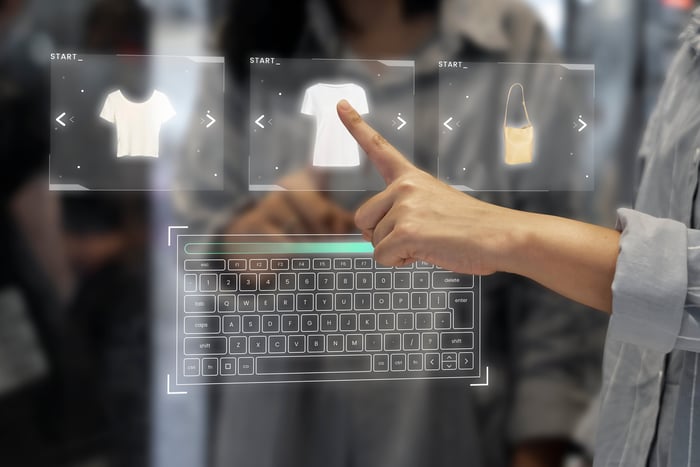

How to Get Your First Sales on Shopify Fast
Table of Contents
- How to Get Sales on Shopify Fast
- 1. Optimize Your Store for Conversions
- 2. Use SEO to Drive Organic Traffic
- 3. Run Smart Paid Ads
- 4. Create Limited-Time Offers
- 5. Build an Email Marketing Funnel
- 6. Improve Your Product Images
- 7. Use Reviews and Social Proof
- 8. Build a Social Media Presence
- 9. Partner with Micro-Influencers
- 10. Simplify Checkout and Offer Payment Flexibility
- 11. Track and Analyze Performance
- 12. Upsell and Cross-Sell Strategically
- Bonus: Leverage AI Tools to Scale Faster
- Seamless Shopify Integration: Elevate Your Fashion Store with Modelia
- Common Mistakes That Hurt Shopify Sales
- How Long Does It Take to Get Sales on Shopify
- Final Thoughts
- FAQs: How to get sales on shopify
Launching your Shopify store is exciting, but getting those first sales can be tough. You might have great products and a clean design, but without the right marketing approach, visitors won’t easily turn into buyers. The good news is that there are proven strategies to help you get traction faster. In this guide, you’ll learn 12 practical methods to get your first sales on Shopify, attract real customers, and start growing your business with confidence to answer the question about how to get sales on shopify.

How to Get Sales on Shopify Fast
1. Optimize Your Store for Conversions
Before driving traffic, make sure your store is ready to convert. Your Shopify site is your digital storefront, and it should look trustworthy, professional, and easy to navigate.
Key steps:
Keep your navigation simple and intuitive.
Use high-quality, consistent product images.
Write product descriptions that focus on benefits, not just features.
Display reviews, trust badges, and clear refund policies.
Offer a seamless checkout process with multiple payment options.
Test everything on mobile. Most Shopify purchases happen on smartphones, so mobile experience is critical.

2. Use SEO to Drive Organic Traffic
Search engine optimization (SEO) is one of the most cost-effective ways to bring customers to your store. When done right, it can generate steady traffic without paid ads.
Focus on:
Finding relevant long-tail keywords for your niche.
Optimizing titles, meta descriptions, and product pages.
Adding alt text to product photos for image search visibility.
Writing helpful blog posts or guides related to your products.
For example, if you sell handmade jewelry, write a blog post like “How to Style Layered Necklaces” to attract organic visitors who are already interested in your products.
3. Run Smart Paid Ads
If you want to get sales on Shopify quickly, paid ads can help. Start with small daily budgets and experiment with different audiences.
Best ad platforms:
Meta Ads (Facebook & Instagram): Great for lifestyle and fashion products.
Google Shopping: Ideal for products with strong purchase intent.
TikTok Ads: Perfect for trend-driven, visual products.
Monitor performance and scale what works. Retargeting campaigns are especially effective since they remind visitors who viewed your store but didn’t buy.

4. Create Limited-Time Offers
Scarcity drives action. Time-sensitive discounts or flash promotions can push hesitant shoppers to make a purchase.
Examples:
“15% off your first order – today only.”
“Free shipping for the next 24 hours.”
Highlight offers using pop-ups or banners on your homepage and product pages. You can use Shopify apps to automate these campaigns easily.
5. Build an Email Marketing Funnel
Email marketing remains one of the highest-converting channels for eCommerce. Start collecting emails from day one with a discount or freebie.
Set up automated email sequences such as:
A welcome email introducing your brand and bestsellers.
A cart abandonment reminder.
A post-purchase follow-up with related product suggestions.
Shopify Email or Klaviyo are excellent tools for automation and segmentation.

6. Improve Your Product Images
Product photos can make or break a sale. Blurry or low-quality images reduce trust and professionalism.
A solution like Modelia Upscaler can enhance and sharpen your product photos up to 4× resolution without losing detail. High-quality visuals make your store look more premium, increase engagement, and improve conversion rates.
Your images are often the first impression of your brand, so investing in clarity and consistency is essential.

7. Use Reviews and Social Proof
Shoppers trust other customers more than they trust brands. Encourage buyers to leave reviews and display them prominently on product pages.
If you’re just starting, offer small discounts in exchange for feedback. You can also feature user-generated content (photos or videos of customers using your products) to build credibility.
Apps like Loox or Judge.me make review management simple on Shopify.
8. Build a Social Media Presence
Social media can drive organic traffic and create brand awareness. Share videos, tutorials, and behind-the-scenes content on TikTok, Instagram, or YouTube.
Content ideas that work:
Product demonstrations.
“How it’s made” or packaging videos.
Before-and-after transformations.
Post consistently, track what resonates, and focus on authenticity over perfection.
9. Partner with Micro-Influencers
Micro-influencers (1,000–50,000 followers) often deliver stronger engagement than larger influencers. Collaborate with creators in your niche by offering free products or affiliate commissions.
Their honest recommendations can bring high-quality traffic and early sales. Use tools like Shopify Collabs or Collabstr to find verified creators quickly.

10. Simplify Checkout and Offer Payment Flexibility
A complicated checkout process is one of the biggest conversion killers. Simplify your checkout and provide multiple payment options such as PayPal, Apple Pay or Shop Pay Installments.
Be transparent about shipping and total costs upfront to reduce cart abandonment.
11. Track and Analyze Performance
Shopify Analytics gives you valuable data about your customers, traffic, and sales behavior. Review it regularly to find improvement opportunities.
Pay attention to:
Best-performing products.
Conversion rates by traffic source.
Drop-off points in the checkout process.
Use these insights to make data-driven changes that boost sales and customer retention.
12. Upsell and Cross-Sell Strategically
Once a customer makes a purchase, increase your average order value with smart upsells and cross-sells.
Ideas:
Recommend complementary products on product pages.
Offer bundles such as “Buy 2, Get 1 Free.”
Show personalized suggestions after checkout.
Apps like Frequently Bought Together or ReConvert Upsell automate these offers for you.
Bonus: Leverage AI Tools to Scale Faster
AI is changing how Shopify stores grow. Use it to save time and improve results:
Generate product descriptions and ad copy with AI writers.
Offer automated customer support through AI chatbots.
Enhance product photos with Modelia Upscaler.
Use AI-based analytics tools for audience targeting.
Combining human creativity with AI efficiency can dramatically boost your sales potential.
Seamless Shopify Integration: Elevate Your Fashion Store with Modelia
Running a fashion store on Shopify just got a whole lot smarter. Modelia’s integration with Shopify allows brands to instantly transform product images, create AI-generated models, and optimize visual content without leaving the platform. Imagine uploading a new collection and having professional-looking product photos ready in minutes, perfectly styled and consistent across your store.
With Modelia for Shopify, fashion retailers can automate tedious tasks like background removal, recoloring, and model generation, saving time and ensuring a polished, on-brand aesthetic. This integration also boosts conversion rates, high-quality, visually appealing product images have been proven to increase engagement and buyer confidence.
Getting started is simple: install the Modelia app from Shopify, connect your store, and start generating AI-enhanced product visuals instantly. Whether you’re a small DTC brand or a large marketplace, Modelia’s Shopify integration streamlines content creation while keeping your brand looking professional and fresh.

Common Mistakes That Hurt Shopify Sales
Not defining a clear target audience.
Slow website loading times.
Overcomplicated menus and navigation.
Lack of reviews or testimonials.
Poor mobile experience.
Audit your store regularly and fix usability issues. Even small improvements can lead to major gains in conversions.
How Long Does It Take to Get Sales on Shopify
There’s no single answer to this one. Some new stores get their first sale within a few days, while others need a few weeks or even months to see traction. It really depends on your product, your marketing, and how much effort you put into testing and improving.
When you’re just starting out, the most important thing is consistency. Keep tweaking your ads, updating your product descriptions, improving your images, and finding the right message for your audience. Every small adjustment teaches you something new about what works — and what doesn’t.
At first, it might feel like you’re shouting into the void. But once those first orders start coming in, things get a lot easier. You’ll have real data to analyze, reviews to build trust, and content to share. That’s when momentum starts to build.
Shopify gives you a big advantage here. Its tools for email marketing, abandoned cart recovery, and analytics help you automate parts of your business and focus on scaling what’s already working. The key is to stay patient and keep optimizing, success usually comes from a mix of persistence and smart adjustments.
So yes, you can absolutely make your first sales within weeks. But turning that into steady income? That’s a process. Keep learning, testing, and showing up, that’s how most successful Shopify stores get there.
Final Thoughts
Getting your first sales on Shopify is not about luck; it’s about strategy, consistency, and attention to detail. Focus on building trust, improving your visuals, and communicating value clearly.
Start by optimizing your store, applying the marketing tactics that fit your niche, and leveraging tools like Modelia Upscaler to elevate your product presentation.
If you stay consistent and follow these 12 proven tips, you won’t just make your first sales, you’ll lay the foundation for a long-term, profitable Shopify business.
Visit Modelia and keep learning about fashion and AI
FAQs: How to get sales on shopify
1. How can I get my first sales on Shopify fast?
Optimize your store, run small ad campaigns, and promote your products on social media. Combine that with a limited-time offer to encourage early purchases.
2. What’s the best free marketing strategy for Shopify?
SEO and social media are the most effective free strategies. Create helpful content, optimize your product pages, and post consistently to attract organic visitors.
3. Why am I getting traffic but no sales?
This usually happens due to low trust or unclear value. Review your product descriptions, prices, and checkout experience to identify friction points.
4. Can I use AI to improve my Shopify sales?
Yes. Tools like Modelia Upscaler improve product photo quality, making your store look more professional and trustworthy, which helps boost conversions.
5. What’s a realistic goal for a new Shopify store?
Aim for 10 to 20 sales within your first month. Once you hit that milestone, analyze what’s working and double down on those strategies.
6. How much should I spend on ads at the start?
Start small, around $5–10 per day. Use this phase to test audiences, creatives, and messaging before scaling your budget.
How would you rate this article:
Related Articles
- 10 Best Fashion e-Commerce Sites to Watch in 2025
- AI Agent for Fashion: Smarter Business & Design Tools
- 8 Best AI Video Editing Tools Transforming the Future of Video Production
- Artificial Intelligence in Fashion: Transforming Design, Marketing and Modeling
- How Fashion Brands Can Succeed with Influencer Marketing
- Product Photography for Ecommerce: Tips for High-Converting Images
- The Ultimate Guide to Dressing for Your Body Shape: Find the Best Clothing Styles
- Wedding Dress Design: Inspiration & Sketch Ideas
- Virtual Shoe Fitting: How Technology is Transforming the Online Shoe Shopping Experience
- How AI Transforms the Modern Design Process








